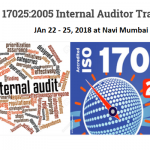HACCP History
HACCP was developed in the late 1950s by a team of food scientists and engineers from The Pillsbury Company, the Natick Research Laboratories, and the National Aeronautics and Space Administration. The team developed a system designed to build quality into the product to ensure food safety for the manned space program.
In 1971, Pillsbury presented this concept at the National Conference on Food Protection sponsored jointly by the Food and Drug Administration (FDA) and the American Public Health Association. Initially, HACCP consisted of three principles:
identification and assessment of hazards associated with food from farm to fork;
determination of the critical control points to control any identified hazard; and
Establishment of a system to monitor the critical control points.
Changes have been made to HACCP to simplify the concept, to make it easier to implement and maintain an FSMS, and to make the FSMS more effective. The initial concept of HACCP, however, has never changed.
The FDA incorporated the concepts of HACCP into its low acid and acidified food regulations in 1974. These regulations were developed in response to outbreaks of Clostridium botulinum poisoning in commercially canned food and have effectively prevented such occurrences since their implementation. Recent outbreaks in commercially canned food have occurred in the products of companies that did not precisely follow the regulations. During the late 1970s, general interest in HACCP waned. Yet during this time, HACCP was impel the requirements in this Specification provide a basis for compliance of processes with (inter)national legislation and codes of practice. They include the necessary management system requirements.
In the description of every clause, the scope of the requirements is detailed. Using these clauses, the audit team assesses the documented HACCP-based Food Safety System as well as the implementation and operation of the system on the ‘shop floor’.
The “Requirements” lay down a generic set of requirements. An operational HACCP-based Food Safety System shall be, as a minimum, in compliance with these Requirements.
HACCP guidance document of Codex Alimentariusented and used by several large food processing companies.
In order to make the system transparent and enable assessment, the food business operator shall provide information as indicated in these “Requirements”. For each specific condition (product / product group / process / sector), specific requirements shall be detailed by the food business operator.
The audit team shall assess this complete system of generic and company specific requirements.
Due to the modification of the Codex Alimentarius (Alinorm 97/13A, Appendix II) in 1997, a revision of the Requirements became necessary. The National Board of Experts – HACCP was also able to draw on their experience in order to improve the quality of the “Requirements”. The 2nd version of the “Requirements” was published in September 1998 and translated into English in February 1999.
Recent developments with respect to HACCP-based Food Safety System and developments within Codex, new proposals for Food Hygiene Regulations (thereby repealing the current referenced EU Directives and Regulations) have necessitated a further revision: the 3rd version (2002).
March 2003: TS 13001/Mart 2003 HACCP standard was issued “According to HACCP food safety management- regulations related management system for food producing organization and suppliers’’.
1 September 2005 ISO 22000 “Food safety management system- requirements for organizations in food chain’’.
HACCP is a systematic approach to the identification, evaluation, and control of food safety hazards. It is a proactive strategy where hazards are identified and assessed, and control measures are developed to prevent, reduce, or eliminate a hazard.
For Media and PR
Contact:-
Ajanta Biswasajanta@uaeiso.com
Sterling International FZE
Level 6,Office 605- The Fairmont, Sheikh Zayed Road,
PO Box 27363, Dubai, United Arab Emirates,
Mobile: +971505842597
Office Phone No + 97144558677






